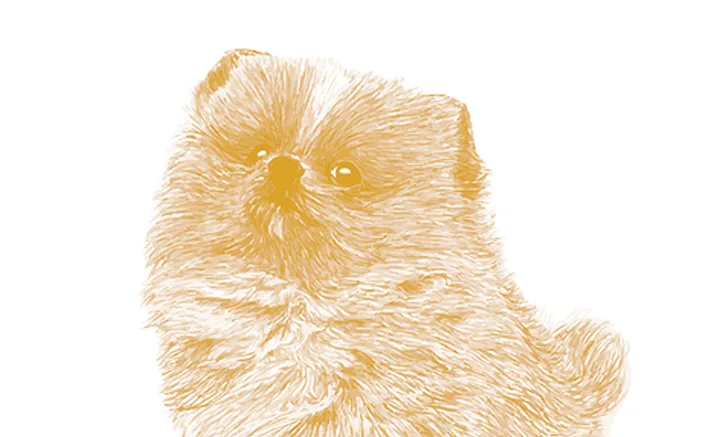Oclacitinib Maleate
Jennifer Schissler Pendergraft, DVM, MS, DACVD, Colorado State University

Oclacitinib maleate is an oral, selective Janus kinase (JAK)-1 and JAK-3 inhibitor approved for treatment of hypersensitivity-induced cutaneous pruritus in dogs 12 months of age or older.
Clinical Applications
Oclacitinib inhibits activity of pruritogenic, proinflammatory cytokines (eg, interleukin-2 [IL-2], IL-4, IL-6, IL-13, IL-31) via JAK-1 and JAK-3 inhibition.
IL-31 is a mediator of canine pruritus.
Oclacitinib offers rapid pruritus control of canine hypersensitivity syndromes without the adverse effects associated with glucocorticoids.
Published clinical trials1,2 demonstrated a statistically significant reduction in owner-observed pruritus within 24 hours.
By day 7 of therapy, >50% reduction in owner-assessed pruritus score was achieved in 70.5% of patients.1
As compared with prednisolone at 0.5 to 1.0 mg/kg PO once a day, oclacitinib at 0.4 to 0.6 mg/kg PO twice a day (label dose) achieved statistically equivalent pruritus reduction within 4 hours and maintained equivalent pruritus control during the 28-day study period.2
Oclacitinib may significantly reduce pruritus in dogs with any form of cutaneous hypersensitivity, including atopic dermatitis, cutaneous adverse food reaction (CAFR), contact hypersensitivity, and hypersensitivity to Sarcoptes scabiei infestation.
Care should be taken to identify and appropriately manage the primary cause of pruritus, as well as secondary bacterial and yeast infections.
Strict flea control measures and elimination diet trials should be used to rule out fleabite hypersensitivity and CAFR, respectively.
Patients with severe pruritus of the hock, elbow, ventrum, or pinna should be treated empirically for sarcoptic mange, even with negative results on skin scrape cytology (see Canine Cutaneous Pruritus: Skin Scrape).
To reach a diagnosis in patients with a cutaneous hypersensitivity, oclacitinib may be administered for initial pruritus control, with subsequent discontinuation of the drug.
Anecdotally, intradermal testing of dogs receiving oclacitinib has produced positive results after 1 month of use.
Whether use of oclacitinib or another immunomodulator improves or reduces efficacy of immunotherapy is unknown.
The impact of long-term use of oclacitinib on intradermal testing or serology assessment of allergen-specific IgE is unknown.
Before referral for intradermal testing, clinicians should contact their veterinary dermatologist for medication withdrawal preferences.
Previous response, or lack thereof, to other immunomodulating drugs (eg, glucocorticoids, cyclosporine) is not predictive of response to oclacitinib.
Oclacitinib is not approved for use in cats.
In one case involving feline cutaneous mastocytic dermatitis, the patient was successfully treated with 31 days of oclacitinib therapy at 1 mg/kg PO twice a day.3
A recently published abstract described success of oclacitinib to control nonflea- and nonfood-induced hypersensitivity in 12 cats that received 0.4 to 0.6 mg/kg PO twice a day for 14 days, then once a day for 14 days.4
Owner-assessed efficacy was reported to be good or excellent in 4 cases.4
Protocol & Side Effects
The label dosage is 0.4 to 0.6 mg/kg PO twice a day for up to 14 days, then 0.4 to 0.6 mg/kg PO once a day indefinitely.5
Once-a-day administration for long-term therapy allows for function of proinflammatory cytokines (eg, ILs), which are important for a healthy T-cell immune response, within the 24-hour period.
Oclacitinib may be discontinued without tapering.
Pruritus may mildly increase with transition from twice-a-day therapy to once-a-day therapy.
Similarly, a missed dose in a patient maintained on once-a-day therapy may lead to rapid pruritus rebound.
Reported side effects are few and include vomiting (2.3%, 5/216) and diarrhea (2.3%, 5/216), which are typically mild and self-limiting.1
Because oclacitinib is an immunomodulating drug, patients may be more susceptible to infection, demodicosis, and neoplasia.5
The author has observed development of solitary oral papillomas in several dogs during oclacitinib therapy.
Safety & Precautionary Measures
Because oclacitinib is a new drug, the safety of long-term therapy is unknown.
In a study of 247 client-owned dogs treated with oclacitinib for up to 630 days, owners noted improved quality of life in >91% of the dogs.6
Hematology and serum biochemistry parameters were in the normal reference range.6
In the author's experience, oclacitinib may be used continuously or intermittently to control signs of atopic dermatitis during sublingual (SL) or SC immunotherapy.
There is a lack of published data regarding the impact of any immunomodulator on the long-term outcome of allergen-specific immunotherapy in dogs.
Safety studies have shown generalized demodicosis and bacterial pneumonia development in dogs receiving 3 to 5 times the label dose at 6 months of age.5
Safety of concurrent use of oclacitinib with other systemic immunomodulatory therapies has not been documented.
Concurrent use of systemic immunomodulators is cautioned.5
No data support expectations of hematology, biochemistry, or urinalysis changes that could mandate monitoring.
Baseline diagnostic assessment before initiating long-term systemic immunomodulatory therapy is prudent.
In the author's opinion, annual monitoring of complete blood cell count, serum biochemistry, urinalysis, and urine culture is reasonable.
More frequent monitoring may be required for other diagnosed conditions.
Urine culture every 6 to 12 months is worthy of consideration, as glucocorticoids and cyclosporine can predispose patients to UTIs.7,8
Occult UTI in patients chronically treated with oclacitinib has not been assessed.
CAFR = cutaneous adverse food reaction, IL = interleukin, JAK = Janus kinase, IL = interleukin, SL = sublingual, UTI = urinary tract infection